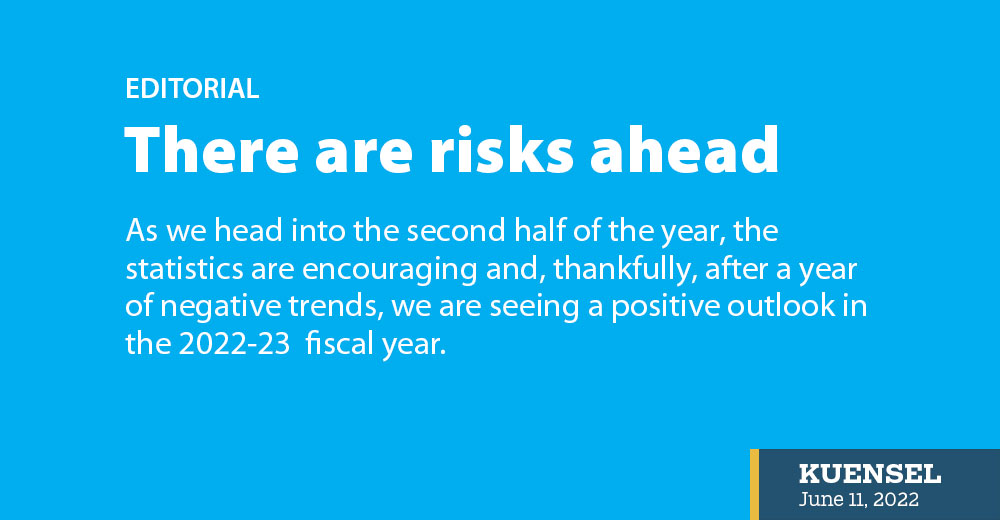As we head into the second half of the year, the statistics are encouraging and, thankfully, after a year of negative trends, we are seeing a positive outlook in the 2022-23 fiscal year.
Economic growth is projected at 4.5 percent, the GDP per capita income is at USD 3,644 this year – an increase of USD 252 from 2021, those in need of income support will be protected through Royal Kidu. The budget focuses on accelerating economic recovery through strategic investments in important sectors like food-self sufficiency and human capital development, among others.
However, given the uncertainties brought about by the Covid-19 pandemic and the Russian-Ukraine conflict, it is difficult to ignore the risks ahead. The Russian invasion of Ukraine and the retaliation from the West and other supporters has disrupted the global economy with warnings of a food crisis sounding louder by the day. Our trade with Russia or Ukraine may be insignificant, but we are feeling the impact of the disruption in logistics and the increase in fuel price.
Inflation is on the rise with fuel price hike responsible for 57.6 percent of the increase in consumer goods. A World Bank study estimated that poverty has increased from 11 percent in 2019 to 12.6 percent in 2021. It is attributed to the sustained high food prices, reduced earnings and decline in aggregate consumption for those at the bottom rung. About 29 percent of households are still worried about running out of food with half of them curtailing consumptions, according to the Bank’s phone-based Covid-19 impact monitoring survey.
While we see a positive outlook, we see, for example, that much of the growth is boosted by grants and loans. Growing debt is not good news even if we are convinced that much of external debt, especially hydropower debts are self-liquidating. The external debt-GDP is projected to reach 117.9 percent in the 2022-23 fiscal year and increase to 129.1 percent in the next fiscal year. Income generated from our own resources have been limited. Notwithstanding the impact of the pandemic, the growth is partly artificial if driven by borrowings.
Another worrying trend is the gaping trade deficit, which is estimated to widen with increasing import and cost of transportation driving the cost of imports. Exports are increasing, but excluding hydropower, it is only limited to a few items like minerals. Increasing imports could impact the hard currency reserves which are already under pressure from dwindling revenue from tourism.
There is a growing concern that many low and middle income countries could face a serious debt crisis. It is reassuring to hear that we are in a manageable situation where we meet our current expenditure from domestic revenue and that our loans are all soft term, meaning that we are not at an immediate risk of a debt crisis.
Nevertheless there are other trends worth watching like youth unemployment and inflation. Life is becoming hard for the average citizen. House rent is on the rise as landlords try to make up for the lost time and rise in cost of raw materials, cost of essentials are increasing heavily burdening some sections of the society. When nearly 70 percent of the salary is spent on house rent, fuel and food, many look to Australia as the “Door to the future” or “Sampai Doendrup” (wish fulfilling).
Besides the positive outlook, there are no clear indications that the actual quality of life will improve amidst the growing uncertainties. Have we forgotten our own growth indicator of Gross National Happiness? How many are happier even with improved projections or figures?


